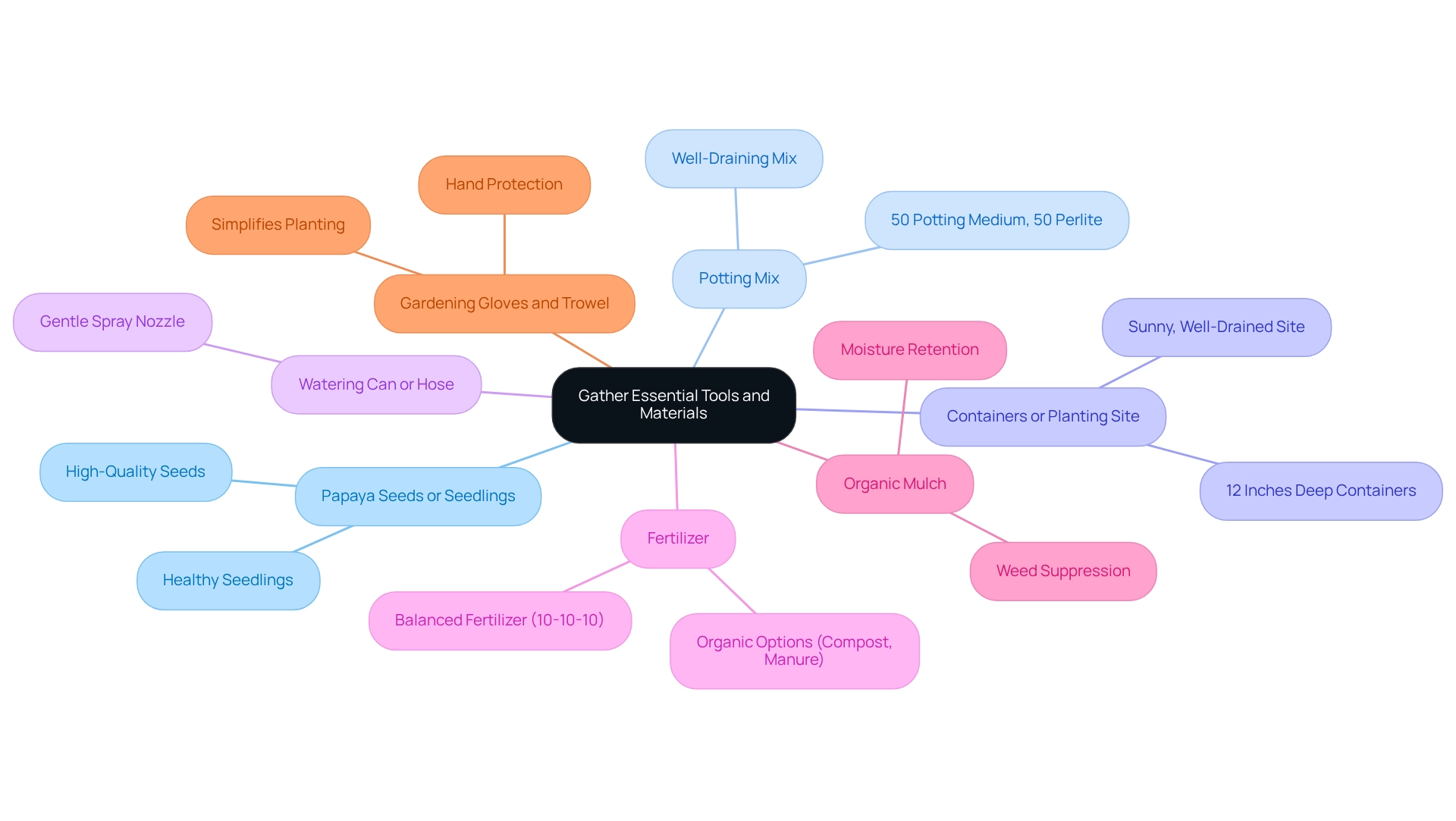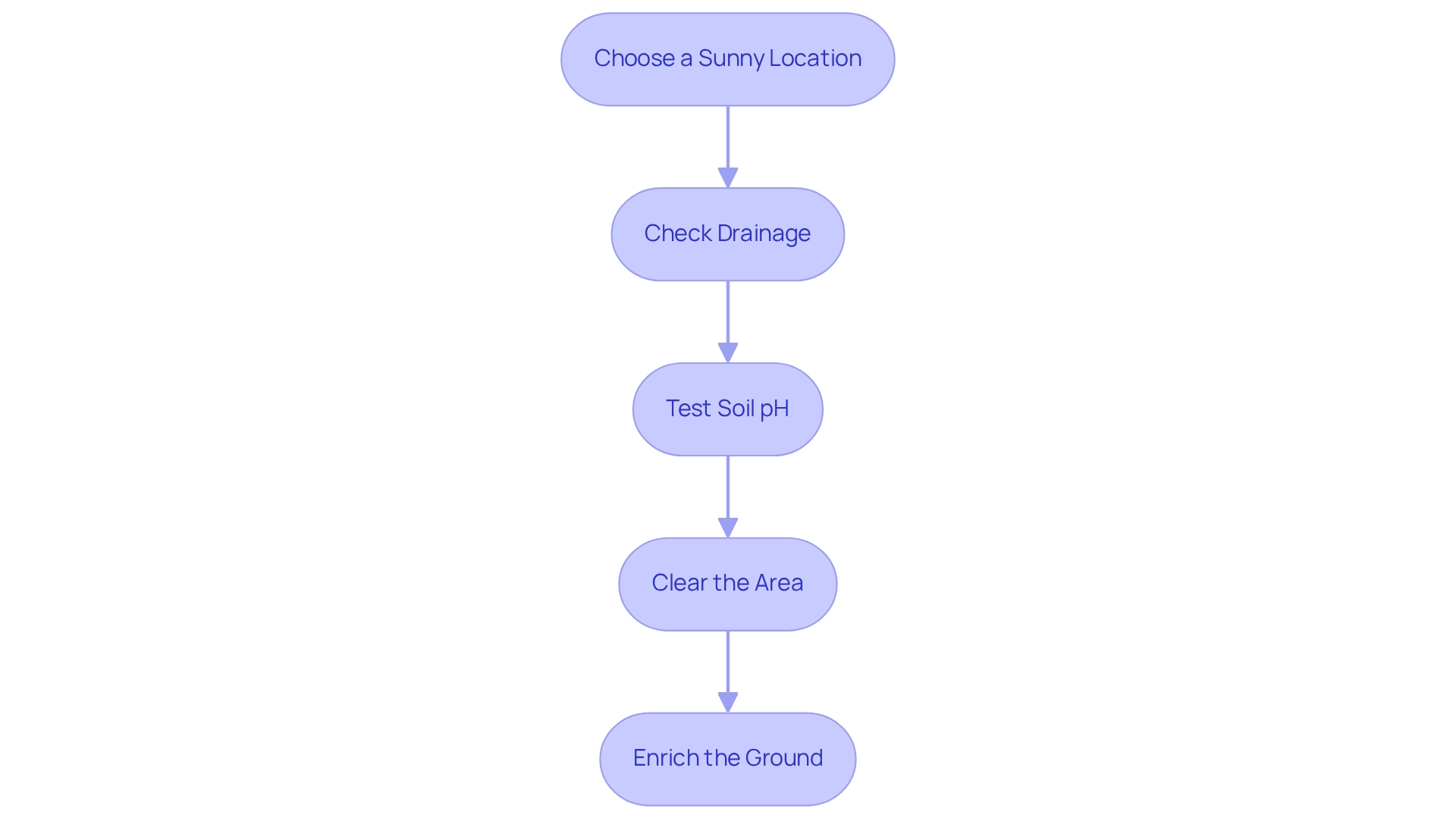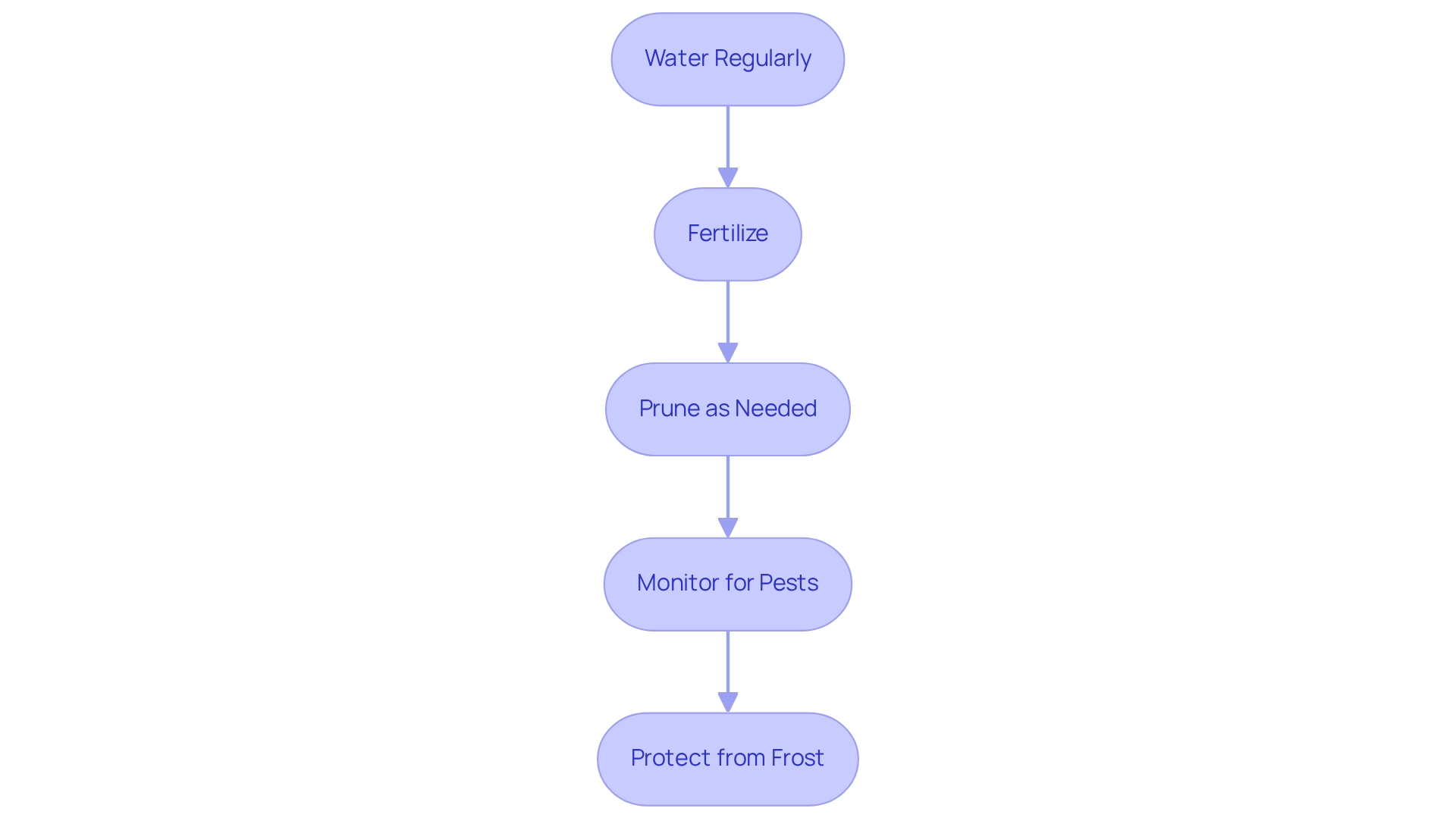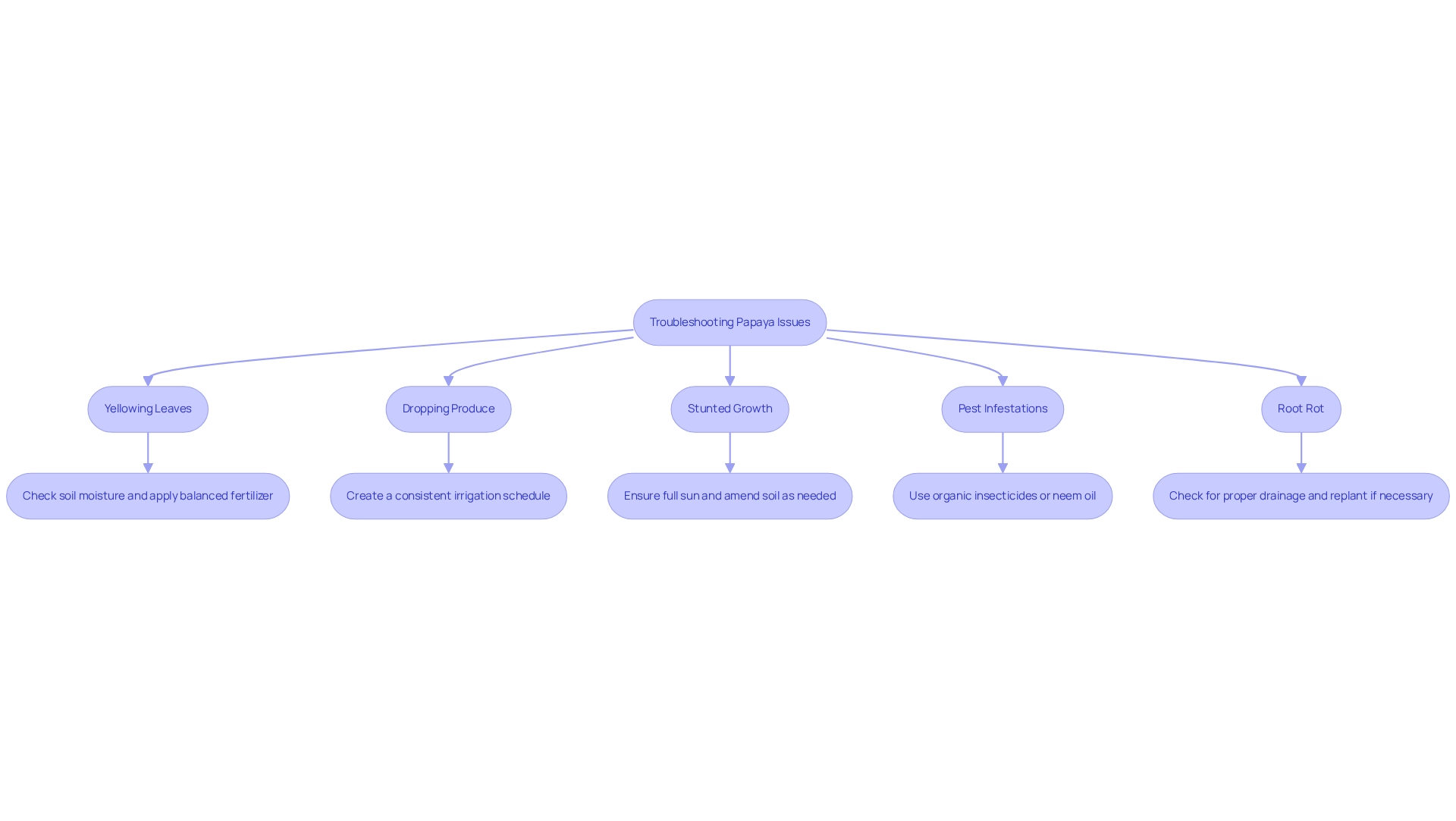Dreaming of a backyard filled with sweet, juicy papayas? The Hawaiian Papaya Tree is your answer. Fast-growing, fruitful, and easy to care for—it’s perfect for both beginner and experienced gardeners. In this guide, we’ll walk you through everything from soil prep to harvest.
🌱 Ready to grow your own? Start with the Hawaiian Papaya Tree from Everglades Farm
- Gather the necessary tools and materials
- Prepare the planting site
- Plant the seedling
- Maintain and care for the tree
- Troubleshoot common growing issues
1. Gather Essential Tools and Materials
- Papaya Seeds or Seedlings: Choose high-quality seeds or healthy seedlings from a reputable source, like Everglades Farm, known for its commitment to quality and exceptional service.
- Potting Mix: Use a well-draining potting mix enriched with organic matter. A combination of 50% potting medium and 50% perlite is perfect for encouraging robust root growth.
- Containers or Planting Site: If planting in pots, select containers that are at least 12 inches deep. For in-ground planting, ensure the site is sunny and well-drained to encourage optimal growth.
- Watering Can or Hose: A watering can or hose with a gentle spray nozzle will help you water the plants without over-saturating the soil.
- Fertilizer: A balanced fertilizer (like 10-10-10) will support growth. Organic options such as compost or well-rotted manure are also beneficial for enhancing soil fertility.
- Organic Mulch: This aids in moisture retention and weed suppression, fostering a beneficial environment for your fruit tree.
- Gardening Gloves and Trowel: Safeguard your hands and simplify planting with gloves and a trowel, especially when cultivating a Hawaiian papaya tree for a bountiful yield.

2. Prepare the Planting Site
- Choose a Sunny Location: Papayas thrive in full sun, so it’s important to select a spot that basks in at least 6-8 hours of direct sunlight each day. Did you know that tropical fruit trees, including papayas, flourish best under these conditions? This sunlight is crucial for their healthy growth and fruitful production.
- Check Drainage: It’s vital to ensure that the ground drains well to avoid root rot. Many home gardeners face drainage challenges, especially with dense clay soils. If your soil is heavy with clay, consider amending it with sand or even planting in raised beds to enhance drainage.
- Test Soil pH: Papayas prefer a slightly acidic to neutral pH, ideally around 6.0 to 7.0. You can easily check this using a testing kit. As specialist Patricia S York points out, many dwarf fruit plants take two to three years to establish after planting. This underscores the importance of providing suitable ground conditions right from the start.
- Clear the Area: Take a moment to remove any weeds, rocks, or debris from the planting area. This step is essential to minimize competition for nutrients, giving your Hawaiian papaya tree the best chance to flourish.
- Enrich the Ground: To enhance fertility and structure, incorporate organic compost or well-decomposed manure into the soil. This addition will provide vital nutrients for your young plant. Successful case studies on preparing planting locations for tropical fruit plants show that enriching the soil significantly boosts growth and fruit production.

3. Plant the Papaya Seedling
- Dig a Hole: Create a hole that is twice as wide and deep as the root ball of the seedling. This not only facilitates root expansion but also promotes healthy growth, nurturing your plant from the start.
- Position the Seedling: Center the seedling in the hole, ensuring that the top of the root ball is level with the surrounding ground. This positioning is crucial for optimal growth, giving your seedling the best chance to thrive.
- Backfill the Hole: Carefully fill the hole with earth, lightly pressing down to eliminate air pockets. It’s important to avoid excessive compaction, as this can hinder root development and limit your plant’s potential.
- Water Thoroughly: After planting, water the seedling deeply to help settle the soil around the roots. Make sure that the water drains well to prevent root rot, as keeping your seedling hydrated is key.
- Mulch Around the Base: Apply a layer of organic mulch around the base of the seedling, keeping it a few inches away from the stem to prevent rot. This will aid in preserving moisture and controlling weeds, creating a supportive environment for growth.

4. Maintain and Care for Your Papaya Tree
- Water Regularly: It’s important to keep the soil consistently moist, but not overly saturated. Water deeply once or twice a week, depending on rainfall. Soaking the soil surrounding the root ball thoroughly is crucial for promoting healthy growth.
- Fertilize: Every 4-6 weeks during the growing season, apply a balanced fertilizer. You might also consider adding organic options like compost to boost nutrients.
- Prune as Needed: Removing any dead or damaged leaves not only promotes airflow but also reduces the risk of disease. Pruning can help control the plant's height, allowing it to thrive in your garden.
- Monitor for Pests: Regularly check for pests, such as aphids or spider mites. If you notice any infestations, using organic insecticidal soap can be a gentle yet effective solution.
- Protect from Frost: If you live in a cooler climate, think about covering the plant during cold snaps to prevent frost damage.

5. Troubleshoot Common Growing Issues
-
Yellowing Leaves: This could be a sign of overwatering or a nutrient deficiency. It's common for many papaya growers, with nearly 30% of plants experiencing nutrient issues. Take a moment to check the soil moisture and consider applying a balanced fertilizer to restore those vital nutrients.
-
Dropping Produce: If your tree is shedding its fruit prematurely, it might be due to stress from inconsistent watering or a nutrient imbalance. By creating a consistent irrigation schedule, you can significantly reduce the risk of produce drop. As gardener stanofh wisely noted, "Maintaining consistent care is crucial for fruit retention."
-
Stunted Growth: If your plant isn’t growing as expected, it may not be receiving enough sunlight or the soil conditions might be lacking. Ensure your papaya tree gets plenty of full sun, and don’t hesitate to amend the soil as needed. A case study titled 'Preparing Your Garden for Fall and Winter' highlights how appropriate care can prevent stunted growth in fruit plants.
-
Pest Infestations: Spotting pests can be concerning, but addressing them promptly with organic insecticides or neem oil is key to preventing damage. Regular observation can help you catch infestations early, keeping your plant healthy and thriving.
- Root Rot: If your plant is wilting despite adequate watering, it’s important to check for root rot. Make sure there’s proper drainage, and consider replanting in fresh soil if necessary. Remember, maintaining plant health through proper care is essential for ongoing fruit production, as emphasized in recent gardening news.

🍍 Let’s Grow Something Sweet Together
From solo backyard growers to tropical fruit collectors, Everglades Farm has you covered. With expert-picked trees, detailed growing instructions, and fast Florida shipping, starting your own tropical orchard has never been easier.
👉 Shop the Hawaiian Papaya Tree →
🌳 Or explore the full Fruit Tree Collection →
Read: Which Papaya is Best for Your Garden?





0 comments